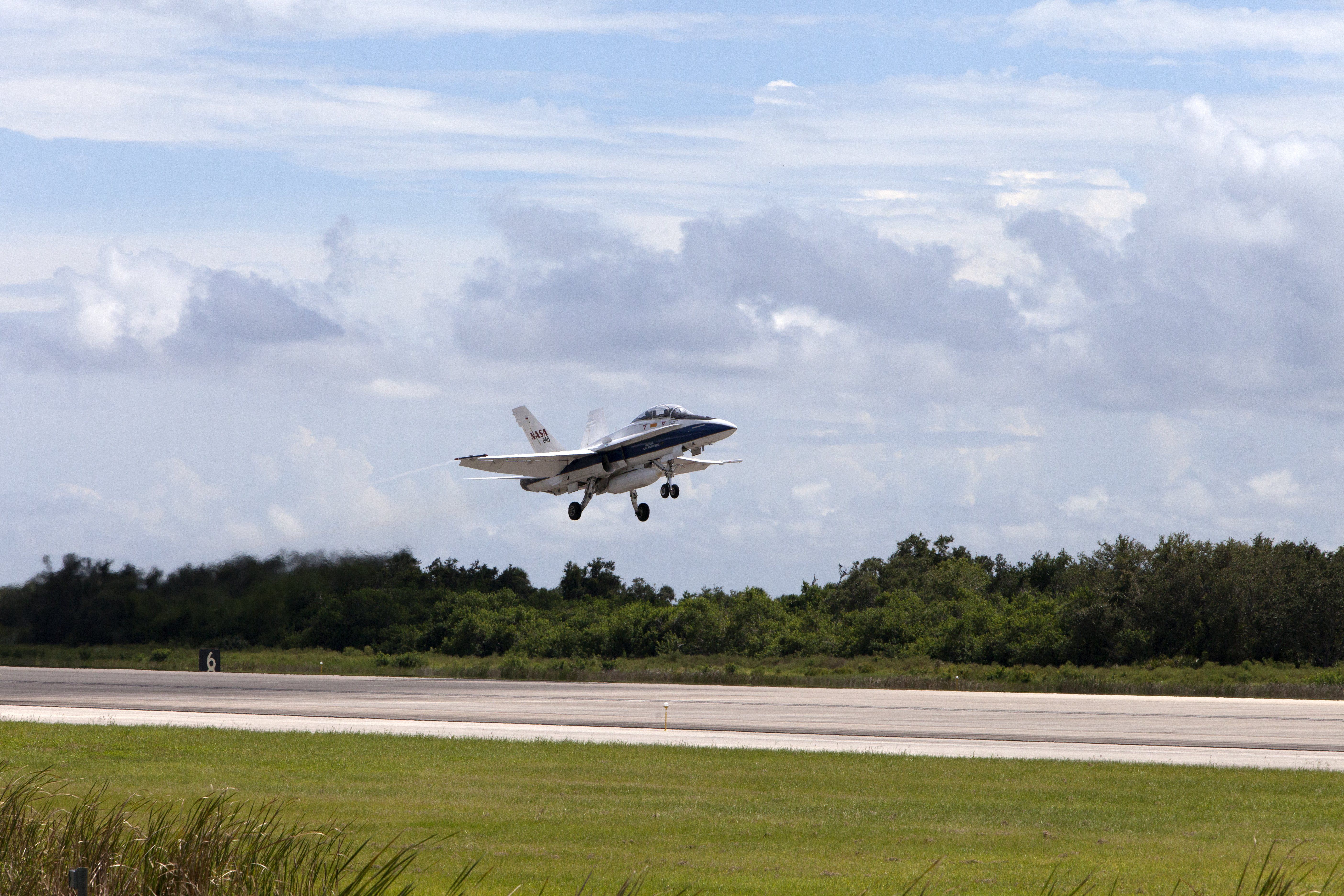Image: NASA/Bill White
NASA will be conducting a series of supersonic flights to gauge future community response to the noise signature of its Low-Boom Flight Demonstrator aircraft (LBFD). Since the contract for construction of the LBFD X-plane was only just awarded to Lockheed Martin at the beginning of April, the Quiet Supersonic Flights 2018 (QSF18) study will use a NASA F/A-18 research plane. The LBFD itself is expected to fly in 2022.
During QSF18, the F/A-18 will perform a specific supersonic maneuver to produce a sound similar to the quieter “thump” NASA predicts the LBFD will make instead of the more typical sonic boom. According to NASA, the aircraft will dive from 49,000 feet, briefly go supersonic and recover at approximately 30,000 feet. Flights will be conducted offshore near Galveston, Texas.
Along with the flights, NASA will conduct surveys to gather data from the Galveston community about the impact of the noise and to check its methodology and technology for future data-gathering. “We are doing important research that is a precursor to a national effort to understand how people react to the sound of a quiet supersonic aircraft flying overhead,” said Commercial Supersonic Technology Project Manager Peter Coen. “We are learning about the best ways to engage communities, collect acoustic data and conduct surveys of in response to sounds that people in a community normally do not hear.” The data from this and future ventures will eventually be used to create new noise standards for supersonic commercial flights over land.

































